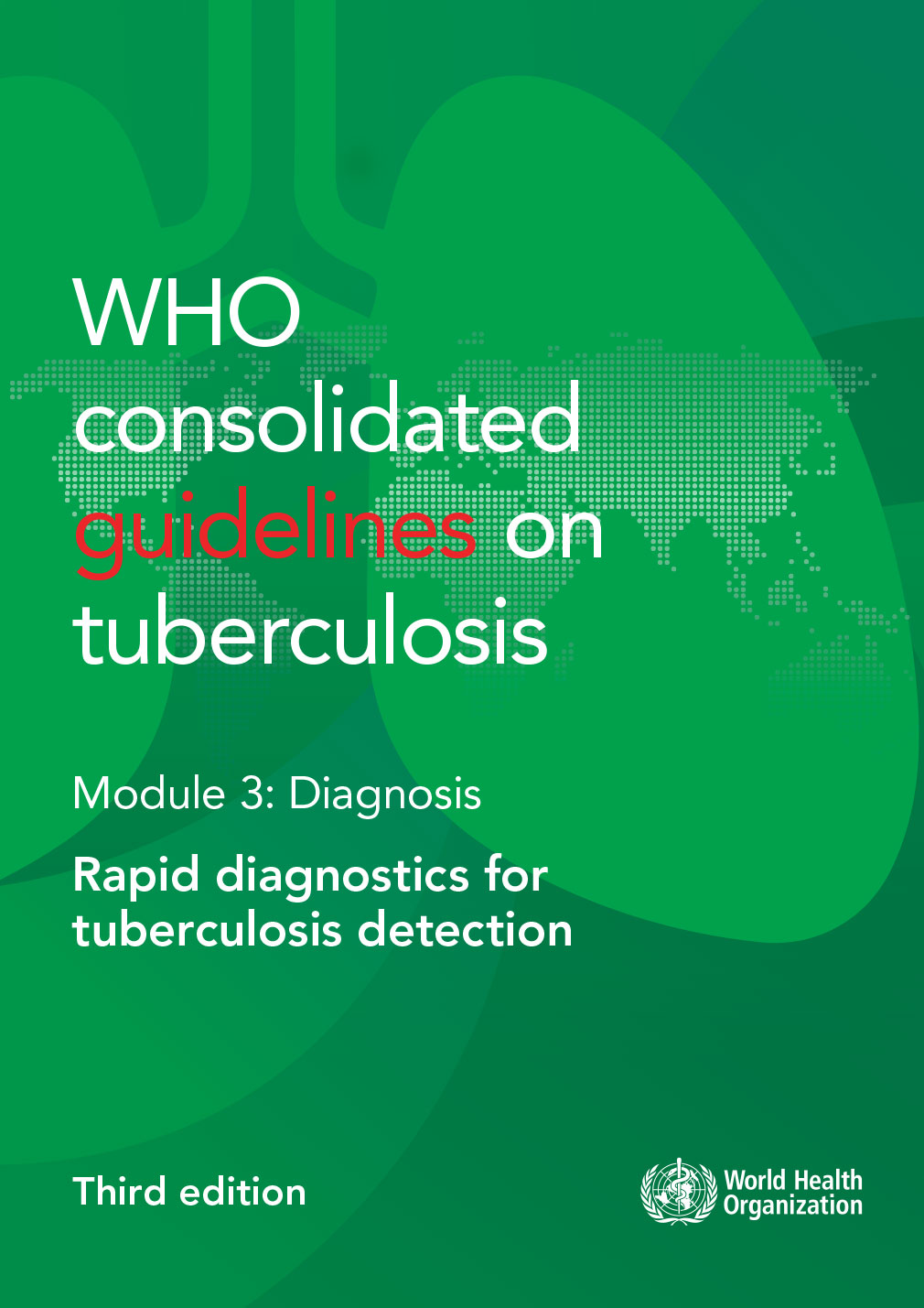Guías consolidadas
Abbreviations and acronyms
AlereLAM
Alere Determine™ TB LAM Ag
BD
Becton Dickinson
cfu
colony forming units
CI
confidence interval
CRS
References
- Resolution 73/3: Political declaration of the high-level meeting of the General Assembly on the fight against tuberculosis. New York: United Nations General Assembly; 2018 (https://www.who.int/publications/m/item/political-declaration-of-the-un-general-assembly-high-level-meeting-on-the-fight-against-tuberculosis).
- Resolution 78/L.4.
Truenat MTB, MTB Plus and MTB-RIF Dx assays
New molecular assays – the Truenat MTB, MTB Plus and MTB-RIF Dx assays (Molbio Diagnostics, Goa, India), hereafter referred to as Truenat – were developed in India, and may be used at the same health system level as Xpert MTB/RIF. Of the above-mentioned assays, MTB and MTB Plus are used as initial diagnostic tests for TB, whereas MTB-RIF Dx is used as a reflex test to detect rifampicin resistance for those with positive results on the initial Truenat tests.
Xpert MTB/RIF and Xpert MTB/RIF Ultra assays
The development of the Xpert MTB/RIF assay (Cepheid, Sunnyvale, United States of America [USA]) was a significant step forward for improving the diagnosis of TB and the detection of rifampicin resistance globally. However, Xpert MTB/RIF sensitivity is suboptimal, particularly in smear-negative and HIV-associated TB patients. The Xpert MTB/RIF Ultra (Cepheid, Sunnyvale, USA), hereafter referred to as Xpert Ultra, was developed by Cepheid as the next-generation assay to overcome these limitations. It uses the same GeneXpert® platform as the Xpert MTB/RIF.
1.1 Background
The political declaration at the first United Nations (UN) high-level meeting on tuberculosis (TB) held on 26 September 2018 included commitments by Member States to four new global targets (1), which were subsequently renewed at the second UN high-level meeting on TB on 22 September 2023 (2). One of these targets is that at least 90 per cent of the estimated number of people who develop TB are reached with quality-assured diagnosis and treatment in the 5-year period 2023–2027 (2).
Low complexity automated NAATs for detection of resistance to isoniazid and second-line anti-TB agents
Among 105 countries possessing representative data on resistance to fluoroquinolones from the past 15 years, the proportion of MDR/RR-TB cases with resistance to any fluoroquinolone for which testing was done was 20.1% (95% CI: 15.5–25.0%). Thus, rapid and early testing for the detection of fluoroquinolone resistance is essential for determining eligibility for treatment with the all-oral 9–12 month standardized shorter regimen for MDR/RR-TB.
Moderate complexity automated NAATs for detection of TB and resistance to rifampicin and isoniazid
Rapid detection of TB and rifampicin resistance is increasingly available as new technologies are developed and adopted by countries. However, what has also emerged is the relatively high burden of isoniazid-resistant, rifampicin-susceptible TB that is often undiagnosed. Globally, isoniazid-resistant, rifampicin-susceptible TB is estimated to occur in 13.1% (95% CI: 9.9–16.9%) of new cases and 17.4% (95% CI: 0.5–54.0%) of previously treated cases (14).
Second-line LPAs
Genotypic (molecular) methods have considerable advantages for scaling up programmatic management and surveillance of DR-TB, offering rapid diagnosis, standardized testing, potential for high throughput and fewer requirements for laboratory biosafety. Molecular tests for detecting drug resistance – for example, the GenoType MTBDRsl assay (Hain Lifescience, Nehren, Germany), hereafter referred to as MTBDRsl (17) – have shown promise for the diagnosis of DR-TB.
Paginación
- Página anterior
- Página 8
- Siguiente página
 Reacción
Reacción
